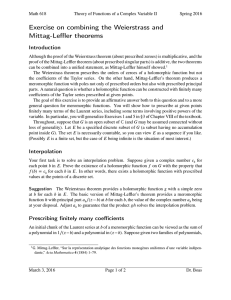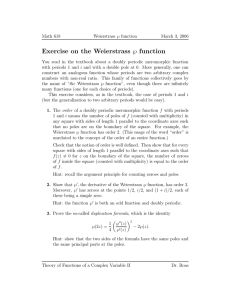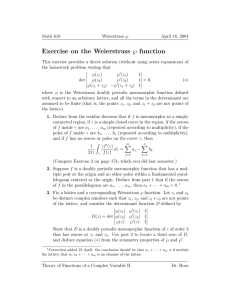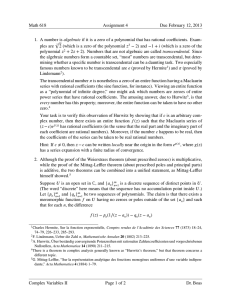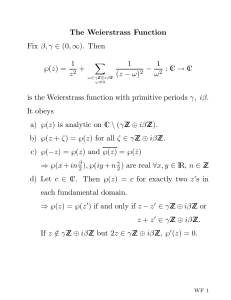Introduction to Mittag-Leffler’s theorem
advertisement
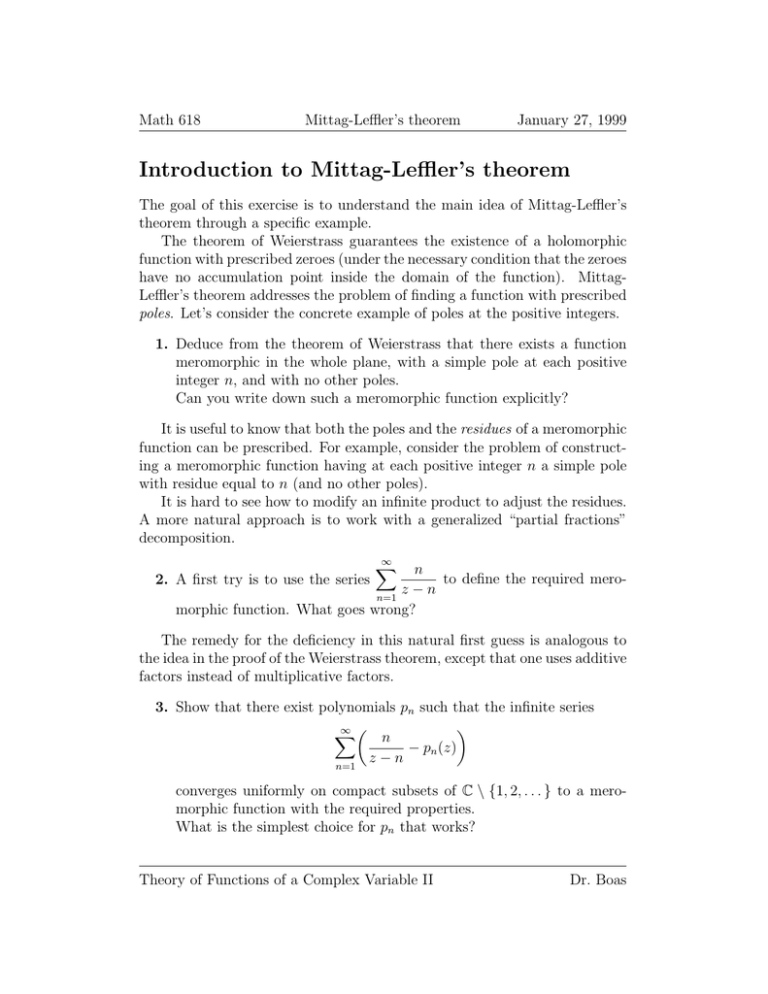
Math 618
Mittag-Leffler’s theorem
January 27, 1999
Introduction to Mittag-Leffler’s theorem
The goal of this exercise is to understand the main idea of Mittag-Leffler’s
theorem through a specific example.
The theorem of Weierstrass guarantees the existence of a holomorphic
function with prescribed zeroes (under the necessary condition that the zeroes
have no accumulation point inside the domain of the function). MittagLeffler’s theorem addresses the problem of finding a function with prescribed
poles. Let’s consider the concrete example of poles at the positive integers.
1. Deduce from the theorem of Weierstrass that there exists a function
meromorphic in the whole plane, with a simple pole at each positive
integer n, and with no other poles.
Can you write down such a meromorphic function explicitly?
It is useful to know that both the poles and the residues of a meromorphic
function can be prescribed. For example, consider the problem of constructing a meromorphic function having at each positive integer n a simple pole
with residue equal to n (and no other poles).
It is hard to see how to modify an infinite product to adjust the residues.
A more natural approach is to work with a generalized “partial fractions”
decomposition.
∞
X
n
to define the required meroz−n
n=1
morphic function. What goes wrong?
2. A first try is to use the series
The remedy for the deficiency in this natural first guess is analogous to
the idea in the proof of the Weierstrass theorem, except that one uses additive
factors instead of multiplicative factors.
3. Show that there exist polynomials pn such that the infinite series
∞ X
n
− pn (z)
z
−
n
n=1
converges uniformly on compact subsets of C \ {1, 2, . . . } to a meromorphic function with the required properties.
What is the simplest choice for pn that works?
Theory of Functions of a Complex Variable II
Dr. Boas
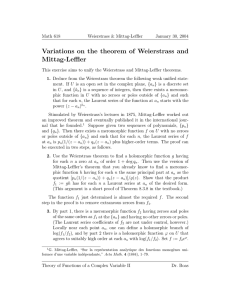
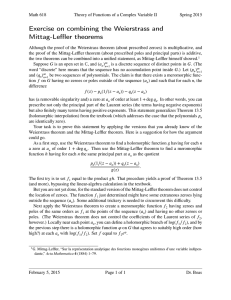
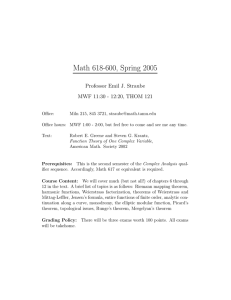
![Mathematics 414 2003–04 Exercises 5 [Due Monday February 16th, 2004.]](http://s2.studylib.net/store/data/010415766_1-b65af2bb66ab8e422354912dcedcb6a6-300x300.png)
